
by Ecoziva (Brazil) | Oct 14, 2013 | 2013, Babies, Being Thankful, Brazil, Child Care, Childhood, Culture, Domesticity, Eye on Culture, Family, Health, Home, Inspirational, Life Balance, Maternal Health, Me-Time, Motherhood, Parenting, Religion, Spirituality, Traditions, Working Mother, World Motherhood, Younger Children
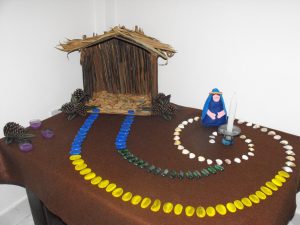 My maternity leave is now coming to an end, but throughout it a typical week day has meant about 12-14 hours alone with the kids.
My maternity leave is now coming to an end, but throughout it a typical week day has meant about 12-14 hours alone with the kids.
I usually wake up at 5:20 a.m. and my husband leaves with our eldest around six. I spend my mornings with our 2 ½ year old girl and our six month old baby boy. Our son returns from school approximately 1:30 p.m. Sometimes my husband returns early, but he usually gets home between 6 and 8 p.m. depending on traffic, his schedule, etc.
I love my kids dearly. Yet any mother knows that such a routine is not easy. On the typical day, by 6 p.m. my patience starts to wane. By nature I have a calm personality, but if there is screaming on my side, 90% of the time it will be after 6 p.m.
I once heard that 6 p.m. is one of the most difficult times of the day. On an individual level it is the time when stress peaks and on a collective level it is the time when most crime, car accidents and other such things happen. I don’t know if there is data backing that, but in a way it does make sense.
In my case, it is around 6 p.m. that the less-than-noble feelings will start to take over my mind, such as resentment, self-pity and repetitive worrying about pending work (although I have been legally on leave and have not been teaching, I did choose to maintain some activities from home). Other days I wish I could just stop working and truly be a full-time mother.
One thing that has helped is practicing acceptance and gratitude: A student sent me her research project two weeks ago and I haven’t even managed to open the file. Sorry, I am doing the best I can. My daughter has been screaming for 15 minutes in a temper tantrum. How great that she is healthy and her lungs are working! The kitchen sink is piled with dishes and the whole house is a mess. Things will get better as the kids grow older.
Of course it is easier said than done and one thing I try to do every day is to pray that my patience lasts past the kids’ bedtime.
I recently thought about how in the past it was a custom here in Brazil – a mostly catholic country – for the radios to play the Ave Maria in Latin at 6 p.m. In the small town I lived in when I was little, the Catholic church’s bells also tolled at six.
I haven’t been much of a radio listener for the past few years so I went on the web to check if the custom was still present. I learned it is a practice that has been carried out here in Brazil for the last 54 years. It comes from an old Portuguese tradition that in turn derives from the Angelus [*] – a Christian devotion recited at 6 a.m., midday and 6 p.m., which refers to Mary and the Annunciation. In simple terms, it is a time of prayer and meditation.
While reading about the 6 p.m. devotion and thinking about the emotional condition of mothers who spend the whole day alone with their children, I realized that it was the kind of practice that makes sense in the context of motherhood. After all, regardless of religion or debates on the specifics of Mary’s story, in a greater context she can be seen as a symbol of an inspiring and caring mother.
With that in mind, this week I am experimenting with short “Mary meditations” around 6 p.m. to see if it helps extend and deepen my patience and acceptance.
And you? What strategies do you use to help you face the challenges of the day-to-day motherhood routine?
[*] If there are any Catholics out there reading this and I am explaining this wrong please correct me! I was sort of raised Catholic in a Catholic country but I’m not actually Catholic, so I don’t have in-depth knowledge of the Angelus.
This is an original post to World Moms Blog from our devoted writer and mother of three in Brazil, EcoZiva.
The photo used in this post was taken by the author.
Eco, from the greek oikos means home; Ziva has many meanings and roots, including Hebrew (brilliance, light), Slovenian (goddess of life) and Sanskrit (blessing). In Brazil, where EcoZiva has lived for most of her life, giving birth is often termed “giving the light”; thus, she thought, a mother is “home to light” during the nine months of pregnancy, and so the penname EcoZiva came to be for World Moms Blog.
Born in the USA in a multi-ethnic extended family, EcoZiva is married and the mother of two boys (aged 12 and three) and a five-year-old girl and a three yearboy. She is trained as a biologist and presently an university researcher/professor, but also a volunteer at the local environmental movement.
More Posts

by Tinne from Tantrums and Tomatoes | Sep 30, 2013 | Babies, Belgium, Family, Kids, Life Balance, Milestones, Parenting, Pregnancy, Relationships, Siblings, Tantrum and Tomatoes, Womanhood, World Mom Feature, World Motherhood, Younger Children
 I suppose it is inevitable. After all, people are what they are, they can’t change themselves. And although curiosity was apparently the mastermind behind the murder of someone’s cat, there are many curious people out there.
I suppose it is inevitable. After all, people are what they are, they can’t change themselves. And although curiosity was apparently the mastermind behind the murder of someone’s cat, there are many curious people out there.
And curious people ask questions.
Sometimes stupid questions, sometimes profound questions, sometime questions which aren’t really questions but more a judgement on one of your actions and/or beliefs.
And sometimes people ask questions on matters which are none of their damn business.
One of those questions is the oft asked : “When are you having another?” or – since I have two girls: “When are you going to have a boy?”.
The answer usually runs along the lines of : “Oh not just yet! I have enough on my plate with just these two!” or “A boy? With these two… (at which I point at my girls doing whatever they are doing) the poor thing would just get traumatized.”
But I rarely tell the truth: No, never. No we are not trying for another baby. No we are not planning to “gift” our girls with a baby brother.
Perhaps it is due to the fact that I had my two girls in such a short space of time (When n°2 was born n°1 was a mere 16 months old) but I am most definitely done having children.
There are many reasons, finances being but one of them. No, we are not in financial trouble, but face it: raising a child is wickedly expensive. For the past three years we’ve spent a small fortune on day care and let’s not even talk about the price of diapers shall we… Had I been better informed I might seriously have considered buying stock options in Pampers or Huggies. With both kids in school we get a bit of financial breathing space, we can afford to finish our home.
But the main reason is balance.
When you are a mother, whether you have a job or are a stay at home mom, life is nothing less than a big balancing act on a loose rope above a pit filled with hungry tigers and fire.
Our balance is OK, right now. We are not in immediate danger of falling off the rope. Both kids attend school full-time, they are too young to have ‘real’ hobbies yet so no rush, rush, rush on Saturday morning – as yet (Please note: I do not count running after each other screaming bloody murder as a hobby).
Because of their relative closeness in age their feeding schedules (if I may be so blunt) are relatively in sync, meaning I don’t have to provide three or four individual breakfasts, lunches and dinners anymore each day. Lately they’ve started playing proper games together, in which each is an equal player and which do not require constant parental interference, just distant supervision.
We can start going on proper outings without dragging half the nursery and a whole plethora of baby food along, just a change of clothes, some cookies and a water bottle will get us through.
So in short: after four years of clutching desperately at that rope we’ve arrived at a spot where we can breathe freely, where we can relax for just a second, where there is time to be “us” and “just me” again.
The realization that we were as we should be came when we gave away the double stroller without an inch of pain or regret. Just happiness that there would finally be some more room in the garage.
Our family has found its balance and it feels wonderful.
When did you realize your family was as it should be?
This is an original post to World Moms Blog from our writer in Belgium and mother of just two…Tinne from Tantrums and Tomatoes.
Born in Belgium on the fourth of July in a time before the invention of the smart phone Tinne is a working mother of two adorably mischievous little girls, the wife of her high school sweetheart and the owner of a black cat called Atilla.
Since she likes to cook her blog is mainly devoted to food and because she is Belgian she has an absurd sense of humour and is frequently snarky. When she is not devoting all her attention to the internet, she likes to read, write and eat chocolate. Her greatest nemesis is laundry.
More Posts - Website
Follow Me:



by Dee Harlow (Laos) | Sep 19, 2013 | Birthing, International, Maternal Health, Nutrition, World Motherhood
 One of the most exciting day in any parent’s life is the day we get to bring our baby home. I was ecstatic to bring our two twin babies home, and very scared too about being left on my own to care for them. But it was indeed one of the most exciting days of my life.
One of the most exciting day in any parent’s life is the day we get to bring our baby home. I was ecstatic to bring our two twin babies home, and very scared too about being left on my own to care for them. But it was indeed one of the most exciting days of my life.
On a recent work trip down to Salavan Province in southern Laos, I got to see two beautiful healthy babies on their way home from a district hospital with their parents. I don’t know who was more excited, them or me! To witness that special moment really touched me because of the volunteer work that I’ve been doing with Cleanbirth.org to help expectant mothers and newborn babies get a safe start in life by providing “clean birth kits” to women in rural Laos who would otherwise give birth unattended at home or in the forest using often unsanitary tools that can cause infection leading to death of the mother or child.
For me to know the long and difficult road that these two mothers have taken to give birth safely made the miracle of birth all the more awesome to me. To know that unless they traveled all way to a provincial hospital, they most likely did not get any prenatal check ups, or vitamin supplements, or ultrasounds. Although the standard of care that we consider basic are indeed accessible and cost relatively little because they are subsidized by the government, they are only available in large urban centers. This means that the 70% of the Lao population who live in rural areas either require a lot of resources to receive this care, or get none at all. Many factors contribute to the inaccessibility of the care expectant mothers need including, geographic remoteness, lack of infrastructure and seasonal limitations for travel on rough roads, lack of transport or money to pay, little knowledge of the health requirements of prenatal care or services available, as well as family priorities of working for subsistence living and other household responsibilities, and many others. (more…)
One of Dee’s earliest memories was flying on a trans-Pacific flight from her birthplace in Bangkok, Thailand, to the United States when she was six years old. Ever since then, it has always felt natural for her to criss-cross the globe. So after growing up in the northeast of the US, her life, her work and her curiosity have taken her to over 32 countries. And it was in the 30th country while serving in the Peace Corps in Uzbekistan that she met her husband. Together they embarked on a career in international humanitarian aid working in refugee camps in Darfur, Sudan, and the tsunami torn coast of Aceh, Indonesia.
Dee is now a full-time mother of three-year old twins and continues to criss-cross the globe every two years with her husband who is in the US Foreign Service. They currently live in Vientiane, Laos, and are loving it! You can read about their adventures at Wanderlustress.
More Posts

by Ecoziva (Brazil) | Aug 12, 2013 | 2013, Being Thankful, Birthing, Brazil, Child Care, Contraception, Family, Husband, Kids, Life Balance, Life Lesson, Marriage, Milestones, Motherhood, Nature, Parenting, Pregnancy, Working Mother, World Motherhood, Younger Children
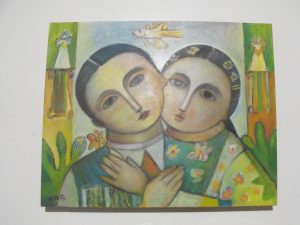 It is no secret to those who know me that marrying and having kids wasn’t exactly part of my life plan. I thought someday I might want to, but up to my 24th year of age – which is when I got pregnant with our first child – the feeling hadn’t come up. My husband, on the other hand, wanted to marry and have a bunch of kids from the time he was a teenager!
It is no secret to those who know me that marrying and having kids wasn’t exactly part of my life plan. I thought someday I might want to, but up to my 24th year of age – which is when I got pregnant with our first child – the feeling hadn’t come up. My husband, on the other hand, wanted to marry and have a bunch of kids from the time he was a teenager!
After a lot of inner work and, above all, after seeing our son’s face for the first time, I fell in love with motherhood. The issue then became: how many children would we actually have? What exactly would be the average between my hesitance and my husband’s “as-many-as-I-can-convince-her-to”?
The answer was part instinct, part serendipity. As a wedding gift, one of my husband’s college professors had a painting made especially for us. The painter did not know us, so (as the story goes) the professor described us as two young, nature-loving, alternative creatures. The piece that resulted – which now hangs right here behind me – portrays a solemn-looking, round-faced couple that is so close they could be Siamese twins. The left hand of each rests on the other’s heart. The girl wears a flower printed dress, has flowers in her hair and a single flower in her hand. The guy wears a suit of sorts. On the side of each of their shoulders is a green, succulent plant, and above each plant is an angel resting on what seems like a marble pillar, one blue, one yellow. Above the couple is a yellow, flying fish.
I was five months pregnant then and had just found out the baby was a boy. The name we chose means “he who tills the earth”. I don’t know who said it first, but we started joking that the blue angel was our boy, the yellow angel was our future second child (a daughter whose name would mean “lady of the waters” in an Indigenous language) and the flying fish would be our youngest (a little boy whose name – a reference to a famous Greek character – would mean “he who balances himself in the air”).
Coincidence or not, here we are almost nine years later with the three of them, born in that order and aged nearly nine, two and a half, and five months. And with the added bonus that both our lady of the waters and our little “flying fish” were born in our tub, to the sign of Pisces!
Having gone through a particularly difficult pregnancy this last time, I constantly tried to convince my husband to undergo a vasectomy. He, however, did not even want to hear about it (like many men I know, he has a huge needle phobia!).
Later, while I was in labor, he said he would do it (talk about good timing!). At that moment I was ecstatic, yet after the baby was born I began to question myself about our decision. I look at that cute little baby (it doesn’t help that he is so calm and sleeps so well!!) and think wistfully, “Oh my, this is the last baby in the house until we have grandkids!” Or now, as the time approaches to start introducing food in addition to nursing, “This is the last time I will be able to smell this pure breast milk breath all the time!” And so on…
My husband of course took advantage of all this and decided to postpone the vasectomy for another two years until I am absolutely sure.
When I stop to really ponder, three seems like a perfect number considering our life style and the way we raise our kids. For instance, we enjoy working from home as much as possible and choose to rely on as little outer help as possible; all of this gets harder with more kids.
Of course, if we “accidentally” did have more children we would find a way. On the other hand, if my husband did undergo a vasectomy and then we later changed our mind, we could adopt (which was a possibility we had considered before having our third child).
Do I really want more kids or am I just attached to this cute baby phase? The truth is, I don’t really know the answer right now! Let’s see what the future has in store…
And you, how many kids do you have? Was it a planned number or did it just happen? How did you decide? Please share your story!
This is an original post to World Moms Blog from our enviro-mama and mother of three in Brazil, EcoZiva.
The photograph used in this post is of the referenced painting commissioned for the author and her husband. It was submitted by the author.
Eco, from the greek oikos means home; Ziva has many meanings and roots, including Hebrew (brilliance, light), Slovenian (goddess of life) and Sanskrit (blessing). In Brazil, where EcoZiva has lived for most of her life, giving birth is often termed “giving the light”; thus, she thought, a mother is “home to light” during the nine months of pregnancy, and so the penname EcoZiva came to be for World Moms Blog.
Born in the USA in a multi-ethnic extended family, EcoZiva is married and the mother of two boys (aged 12 and three) and a five-year-old girl and a three yearboy. She is trained as a biologist and presently an university researcher/professor, but also a volunteer at the local environmental movement.
More Posts
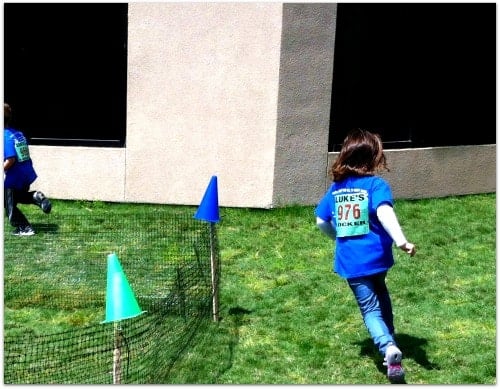
by Meredith (USA) | Aug 9, 2013 | Childhood, Competition, Education, Exercise, Family, Health, Kids, Life Balance, Life Lesson, Maternal Health, Motherhood, Music, Parenting, School, Sports, Stress, USA, World Motherhood, Younger Children, Youth Programs
 The air is slowly starting to get a bit cooler and the days a bit shorter (well, maybe not in Texas…but I know it is in some parts of the world), and I know it can only mean that fall will be soon approaching. Fall approaching in the Northern Hemisphere also means school starting, schedules to follow, and the onset of after school activities.
The air is slowly starting to get a bit cooler and the days a bit shorter (well, maybe not in Texas…but I know it is in some parts of the world), and I know it can only mean that fall will be soon approaching. Fall approaching in the Northern Hemisphere also means school starting, schedules to follow, and the onset of after school activities.
I don’t know how it is in your part of the globe, but here in Texas, some children start playing tackle football from the time they can walk (it seems). If they aren’t playing football, then they are playing year round baseball and look like mini major league players. A few months ago, I was talking to a mom of a girl in my son’s grade and she was telling me that both her girls are in ballet two times a week, gymnastics one day a week, one takes piano and the other takes violin lessons. And the same daughter who takes violin lessons, gymnastics and ballet also has to swim four days a week at 7:30 pm at night to be able to compete on the swim team. Her daughter is only going into second grade!!! (more…)
Meredith finds it difficult to tell anyone where she is from exactly! She grew up in several states, but mainly Illinois. She has a Bachelor of Science degree in Elementary Education from the University of Illinois at Champaign/Urbana which is also where she met her husband. She taught kindergarten for seven years before she adopted her son from Guatemala and then gave birth to her daughter two years leter. She moved to Lagos, Nigeria with her husband and two children in July 2009 for her husband's work. She and her family moved back to the U.S.this summer(August 2012) and are adjusting to life back in the U.S. You can read more about her life in Lagos and her adjustment to being back on her blog: We Found Happiness.
More Posts

by Kristyn Zalota | Aug 6, 2013 | 2013, Birthing, Clean Birth Kits, Laos, World Moms Blog, World Voice
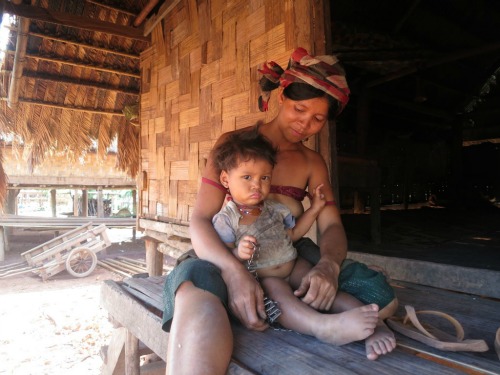
As many of you know, one year ago I started CleanBirth.org, a non-profit aimed at reducing infant and maternal mortality in Laos. We provide nurses with training, birthing supplies and funding to educate village volunteers about safe birthing practices.
One tenet of my organization is that local people call the shots on-the-ground, while Westerners provide the resources and funds. Local nurses are empowered to develop and execute programs which empower expecting mothers to have safer births.
There’s that darling of non-profit speak: empower. Oxford defines it: to “… make (someone) stronger and more confident, especially in controlling their life and claiming their rights.” A worthy goal, certainly, but sometimes I worry:
“Can foreigners really empower locals to find long-term solutions to their own problems?”
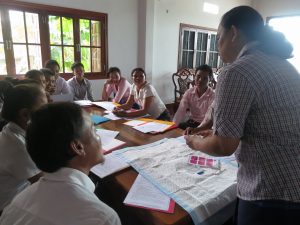
Photo By Kristyn Zalota
I thought about this on my long journey to Laos in June to train twelve nurses. On this second CleanBirth Training trip, I wanted to see that the nurses were taking ownership of our CleanBirth Kits Program. I also wanted to hear their new ideas about ways that we can make birth safer.
From the beginning, it was clear they the nurses wanted to learn and participate. They were “…thrilled to have been invited…none of them had ever been asked to a training like this before.” They asked pertinent questions about the CleanBirth Kits Program and grasped the importance of accurately reporting data.
As we moved on to additional ideas for making birth safer, they became even more engaged. Dr. Nong, my Lao partner, had to write furiously to keep up with the nurses’ suggestions. I sat back and smiled, thinking:
“This is exactly the way it should be. I, the Westerner, am in the background, while they, the locals, are finding their own answers.”
In the end Dr. Nong and the nurses drafted an outline for our new initiative: CleanBirth Volunteer Training. The nurses will gather one woman from each of the villages that she serves to learn about Clean Birth Kits, safe birth practices, and prenatal and infant care. The first CleanBirth Volunteer Training will be held in October.
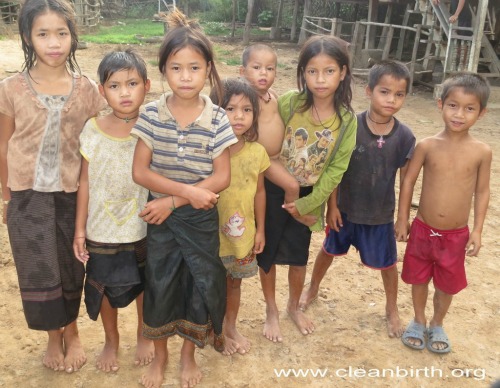
So have we empowered these nurses? Are we giving women more control over their lives and births in the 100 remote communities that we serve? I’d say that we are off to a good start. The nurses have the funds and the tools that they need. They have designed the solution themselves. Now, we must wait and see what happens next.
This is an original World Moms Blog post by Kristyn Zalota.
What do you think? Is it truly possible as an outsider to empower locals of another culture in a sustainable way?
Kristyn brings her years of experience as an entrepreneur and serial volunteer to CleanBirth.org. She holds a MA, has run small businesses in Russia and the US, and has volunteered in Nicaragua, Costa Rica, Thailand, Cambodia, Laos and Uganda on projects related to women’s empowerment.
After having children, Kristyn became an advocate for mothers in the US, as a doula and Lamaze educator, and abroad, as the Founder of CleanBirth.org. She is honored to provide nurses in Laos with the supplies, funding and training they need to lower maternal and infant mortality rates in their villages.
More Posts

 My maternity leave is now coming to an end, but throughout it a typical week day has meant about 12-14 hours alone with the kids.
My maternity leave is now coming to an end, but throughout it a typical week day has meant about 12-14 hours alone with the kids.





 One of the most exciting day in any parent’s life is the day we get to bring our baby home. I was ecstatic to bring our two twin babies home, and very scared too about being left on my own to care for them. But it was indeed one of the most exciting days of my life.
One of the most exciting day in any parent’s life is the day we get to bring our baby home. I was ecstatic to bring our two twin babies home, and very scared too about being left on my own to care for them. But it was indeed one of the most exciting days of my life.


 The air is slowly starting to get a bit cooler and the days a bit shorter (well, maybe not in Texas…but I know it is in some parts of the world), and I know it can only mean that fall will be soon approaching. Fall approaching in the Northern Hemisphere also means school starting, schedules to follow, and the onset of after school activities.
The air is slowly starting to get a bit cooler and the days a bit shorter (well, maybe not in Texas…but I know it is in some parts of the world), and I know it can only mean that fall will be soon approaching. Fall approaching in the Northern Hemisphere also means school starting, schedules to follow, and the onset of after school activities.






